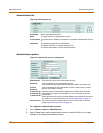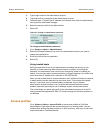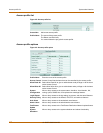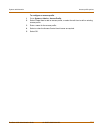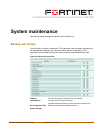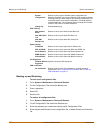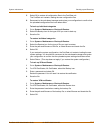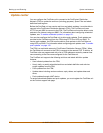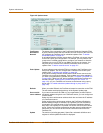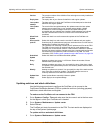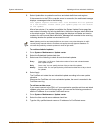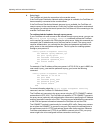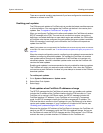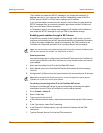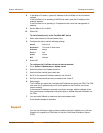
118 01-28007-0068-20041203 Fortinet Inc.
Backing up and Restoring System maintenance
Update center
You can configure the FortiGate unit to connect to the FortiProtect Distribution
Network (FDN) to update the antivirus (including grayware), Spam Filter and attack
definitions and engines.
Before the FortiGate unit can receive antivirus and attack updates, it must be able to
connect to the FortiProtect Distribution Network (FDN). The FortiGate unit uses
HTTPS on port 8890 to connect to the FDN. The FortiGate unit must be able to route
packets to the Internet using port 8890. For information about configuring scheduled
updates, see “To enable scheduled updates” on page 121.
You can also configure the FortiGate unit to allow push updates. Push updates are
provided to the FortiGate unit from the FDN using HTTPS on UDP port 9443. To
receive push updates, the FDN must be able to route packets to the FortiGate unit
using UDP port 9443. For information about configuring push updates, see “To enable
push updates” on page 123.
The FDN is a world-wide network of FortiProtect Distribution Servers (FDSs). When
the FortiGate unit connects to the FDN it connects to the nearest FDS. To do this, all
FortiGate units are programmed with a list of FDS addresses sorted by nearest time
zone according to the time zone configured for the FortiGate unit.
The FortiGate unit supports the following antivirus and attack definition update
features:
• User-initiated updates from the FDN,
• Hourly, daily, or weekly scheduled antivirus and attack definition and antivirus
engine updates from the FDN,
• Push updates from the FDN,
• Update status including version numbers, expiry dates, and update dates and
times,
• Push updates through a NAT device.
To receive scheduled updates and push updates, you must register the FortiGate unit
on the Fortinet support web page.



